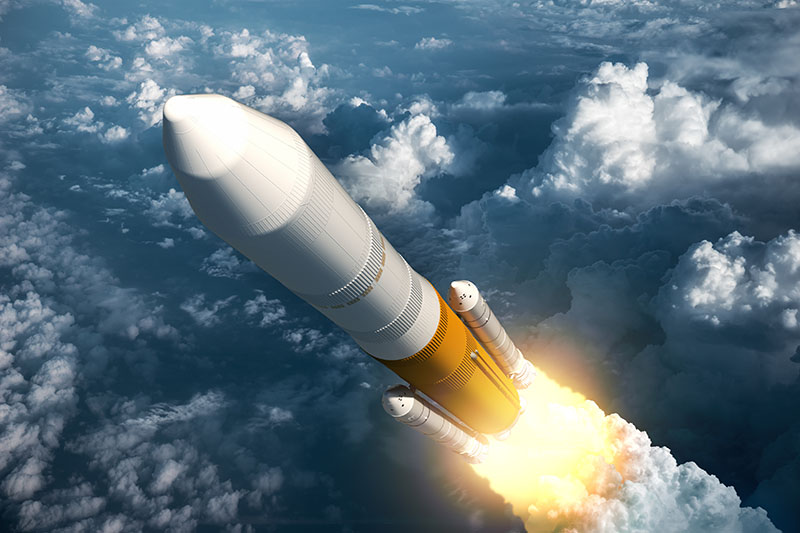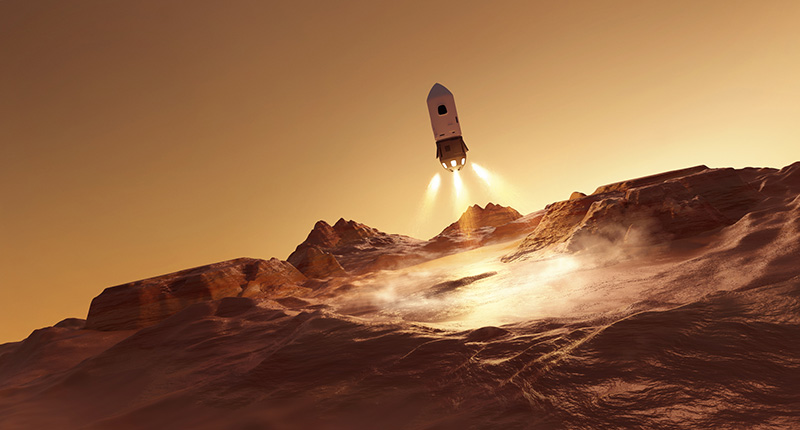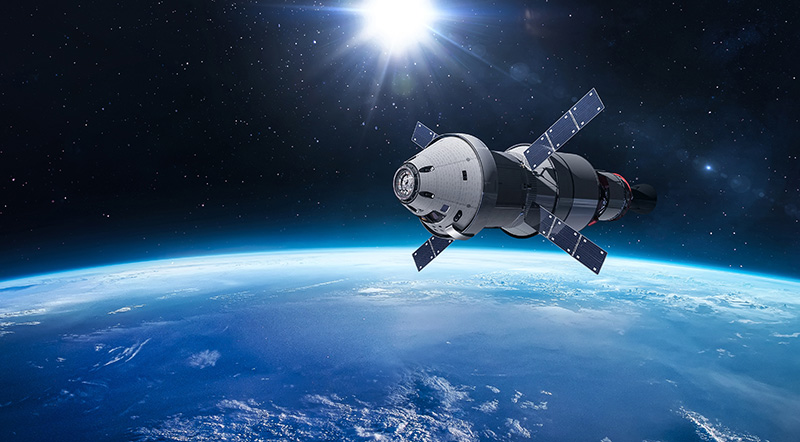Market Connector: Next-Generation Spacecraft

Space programs worldwide have many ambitious plans for the following decades, including returning humans to the Moon, establishing permanent lunar bases on the Moon, and sending the first human crew to Mars. New and advanced spacecraft and habitat systems will be required to get there.
These new technologies will have to traverse distances in space further than anyone has gone before and survive in habitats once thought impossible for human habitation and must be substantially hardened for long service life in the harshest environments ever encountered.
Who: Industry leaders driving the development of advanced spacecraft technologies include public agencies like NASA and the European Space Agency, along with companies such as SpaceX, Blue Origin, and Boeing. NASA's Orion spacecraft is designed to take humans back to the Moon for the first time since Apollo 17 in 1972 as part of the Artemis mission before eventually spearheading a manned mission to Mars. Orion will carry astronauts from Earth to lunar orbit and back, with key features such as a launch abort system for crew safety, a service module for propulsion and power, and a crew module for housing astronauts.
SpaceX and Blue Origin are pivotal partners in the Artemis mission. SpaceX is slated to play a major role in transporting astronauts from lunar orbit to the Moon's surface and back through its Starship human lander, while Blue Origin is expected to contribute through its Blue Moon lander, which is designed to deliver cargo and experiments to the lunar surface.

What: Next-generation spacecraft designed for human missions to the Moon, Mars, and beyond must address several critical needs to ensure the success of long-duration space travel.
Robust life support systems are essential for maintaining breathable air, clean water, and suitable living conditions over extended periods. These systems are being designed to efficiently recycle resources to minimize the need for resupply from Earth. In addition, reliable propulsion and navigation systems that provide the necessary thrust for long-distance travel while being fuel-efficient are being implemented.
Life support systems aboard the Orion are enabled through its Environmental Control and Life Support System (ECLSS), which maintains a breathable atmosphere by removing carbon dioxide, trace contaminants, and particulate matter from the cabin air. To maintain a comfortable interior environment for both the crew and onboard electronics, the craft’s Active Thermal Control System (ATCS) uses liquid cooling loops and heat exchangers, alongside multi-layer insulation and radiators, to manage the internal temperature of the cabin.
Long-term human habitats on the surface of the Moon and Mars are being planned to offer more than just shelter. These habitats are envisioned as providing both a livable and psychologically supportive environment. This includes spacious living quarters to reduce the feeling of confinement, areas for exercise to mitigate the effects of prolonged weightlessness, and even recreational spaces for downtime. Advanced automation and AI will have a major part in managing habitat systems by automating routine tasks and ensuring optimal living conditions.
For missions to Mars and beyond, the ability to generate power independently is crucial. This could involve solar power systems, nuclear reactors, or other innovative energy sources capable of providing reliable power in the harsh environments of deep space.
Spacecraft and habitats supporting these missions must be hardened against the severe environments of deep space travel. This includes withstanding extreme temperatures, electromagnetic interference and electrostatic discharge events, micrometeoroid impacts, and other environmental hazards while maintaining system integrity over long timeframes.
Where: The Moon remains a primary focus for the immediate future with the Artemis mission. Through Artemis, NASA aims to bring humans back to the Moon and establish the building blocks for a sustainable human presence on the Moon's surface one day, particularly at the lunar South Pole. This region is of high interest due to its permanently shadowed craters, which are believed to contain water ice that could be crucial for sustaining human life and supporting further exploration. Mars is the next major destination, with the long-term goal of establishing a permanent human presence there.
Beyond the Moon and Mars, space agencies are also considering missions to asteroids and the moons of outer planets. Asteroids, particularly those near Earth, offer opportunities for resource extraction and could serve as stepping stones for deeper space missions. For instance, NASA's mission to the asteroid Psyche aims to explore its metallic composition, which could provide insights into the building blocks of planet formation. The Psyche spacecraft launched in 2023, with plans to reach the asteroid in 2029.

When: With ambitious missions planned for the coming decades, next-generation spacecraft systems are beginning to take shape.
Artemis I, which launched on November 16, 2022, was an uncrewed mission that successfully tested the Space Launch System (SLS) and the Orion spacecraft. Following this, Artemis II is scheduled for 2025 and will be the first crewed mission, orbiting the Moon and testing critical systems with astronauts on board. Artemis III, planned for 2026, intends to land astronauts on the lunar South Pole. Subsequent Artemis missions will focus on building the Lunar Gateway, an orbiting lunar space station, and developing infrastructure for sustained lunar exploration.
Mars missions are currently projected for the 2030s. NASA is focused now on developing the necessary technologies and systems for long-duration missions to the red planet, including advanced propulsion, life support, and habitat modules.
Why: The development and perfection of next-generation spacecraft and habitats are essential for mission success and for ensuring the safety and well-being of astronauts as they venture beyond low Earth orbit, encountering harsh environments and significant risks. These systems must provide reliable life support, radiation protection, and advanced propulsion systems to enable high-stakes missions to the Moon, Mars, and beyond.
The environmental conditions beyond low-Earth orbit are uniquely and severely hazardous to crews and to the technology they rely on to complete their missions. Rugged, high-performance connectors that can endure the significantly harsh environments of deep space are paramount to the success of deep space missions.
About Us
Amphenol Aerospace is an industry-leading designer and manufacturer of interconnect products for the military and aerospace markets.
Search for parts through our Technology guide, or visit our Product Configurator to get 3D models of the exact configuration that you are looking for.